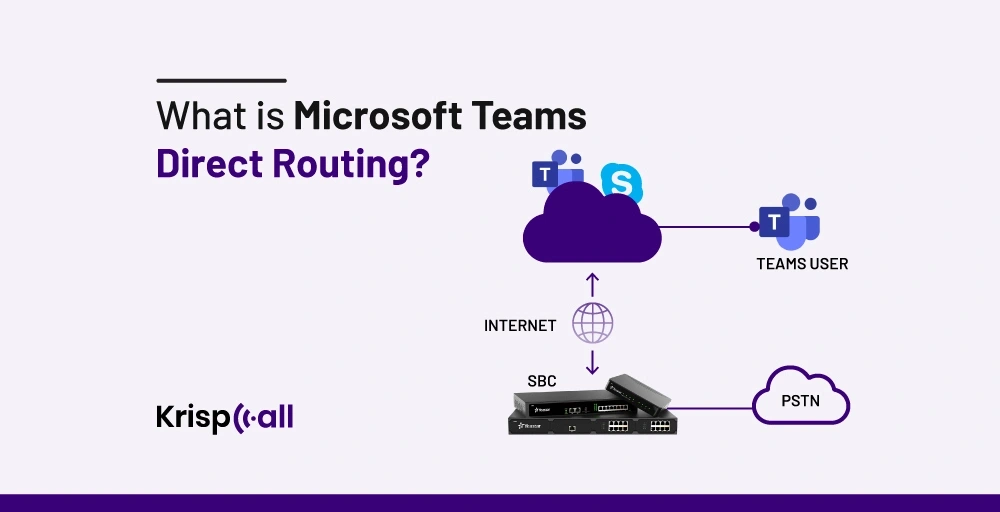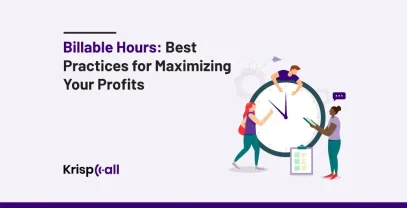In today’s business world, relying solely on communication within Microsoft Teams can be limiting. You might need to connect with clients or colleagues outside your organization, and Teams doesn’t provide a built-in way to do that.
This can be frustrating if you’re trying to collaborate with external partners or simply make a business call. It can disrupt your workflow and make it challenging to stay connected.
Microsoft Teams Direct Routing offers a solution. It allows you to connect your existing phone lines with Microsoft Teams so you can make and receive calls from within the platform. This eliminates the need to switch between different apps and keeps your communication centralized.
But how does Microsoft Teams Direct Routing work, and how can Microsoft Teams Direct Routing be implemented in your organization?
Let’s find out 👇
- Microsoft Teams Direct Routing is a feature that combines your existing phone system with Microsoft Teams, allowing you to make and receive phone calls.
- Its significant importance is the integration of Phone Systems, Using Regular Phone Numbers, cost savings, and more.
- While implementing Direct Routing In Microsoft at first you should Choose a Phone System provider, Set up SIP Trunks, Configuration of Microsoft Teams, Allocation of Phone Numbers, and Optimization.
- You can choose trustable Microsoft providers like KrispCall for better improvement.
What is Microsoft Teams Direct Routing?
Microsoft Teams Direct Routing is a feature that combines your existing phone system with Microsoft Teams, allowing you to make and receive phone calls directly from the MS Team interface.
This connection enables your company to interact securely by utilizing the power of Microsoft Teams while maintaining the functionality of your PSTN infrastructure.
Direct Routing requires a component called Session Border Controllers (SBCs). They play a vital role in ensuring a smooth and secure connection between your existing phone infrastructure and MS Teams. Usually, it requires SBCs for this connection since they act as bridges between the Microsoft Phone System and the organization’s network SBCs handle tasks like network traversal and protocol translation so that communication between your systems and Teams is reliable and protected.
As you implement Microsoft Call Routing workers in your firm can use MS Teams to handle calls the same way they would with their regular phones. They can make or answer calls from their desktops, tablets, or cellphones, and everything happens directly in the MS Team app. They can also use complex phone functions, like call forwarding and voicemail setup, from within Teams.
Why is Microsoft Teams Direct Routing Important?
Microsoft Teams Direct Routing is important because it allows efficient communication processes and better collaboration within organizations.
Some of its significant importance are:
- Integration of Phone Systems: Businesses can integrate VoIP phones and other current phone systems with Microsoft Teams with the use of Microsoft Teams Direct Routing.
- Using Regular Phone Numbers: Employees have the flexibility to use their familiar phone numbers for making and receiving calls directly within the MS Team interface.
- Cost Savings: Businesses can still take advantage of team collaboration features at a lower cost by using direct routing which lets them make the most of their investment in other telephony equipment.
- Enhanced Communication Flexibility: By connecting VoIP phones with MS Teams using Direct Routing users can access more types of team communication tools.
- Enhanced Collaboration: Integration with Microsoft Team enhances collaboration by utilizing advanced communication features alongside existing phone systems.
- Streamlined Communication Processes: The improved communication processes that result from combining phone systems with MS Team boost productivity and efficiency.
How Does Microsoft Teams Direct Routing Work?
Microsoft Teams Direct Routing works by establishing a secure connection between an organization’s existing VoIP infrastructure and the Microsoft Phone System, which supports Teams calling capabilities. Here is how it works :
- Implementation of Session Border Controllers (SBCs): The implementation of Session Border Controllers (SBCs) facilitates this connection by serving as mediators which ensures smooth communication between the two systems. SBCs handle essential tasks like protocol translation, encryption, and network traversal, ensuring that the communication process is both reliable and secure.
- IP Trunk or PBX Integration: Organizations typically have an existing telephony infrastructure that includes a SIP trunk (a virtual connection to the Public Switched Telephone Network) or a traditional PBX system. Direct Routing integrates this infrastructure with Microsoft Teams.
- Configuration: Administrators configure the SBC to route calls between the telephony infrastructure and Microsoft Teams. This involves setting up routing rules, and call policies, and ensuring proper integration with the organization’s phone numbers and dialing plans.
- Microsoft Teams Configuration: Within the Microsoft Teams admin center, administrators configure Direct Routing settings, including the assignment of phone numbers to users, call routing policies, and integration with emergency services.
- User Experience: After configuration, users can make and receive calls directly within the Microsoft Teams application. They can use features such as dialing from the Teams interface, receiving inbound calls, transferring calls, and accessing voicemail.
- External Calling: Direct Routing enables users to make calls to external phone numbers, including local, long-distance, and international numbers. Outbound calls are routed through the organization’s telephony infrastructure before reaching the PSTN (Public Switched Telephone Network).
- Management and Monitoring: Administrators have visibility and control over call traffic, quality of service, and user activity through monitoring tools and reporting capabilities provided by the SBC and Microsoft Teams admin center.
How to Implement Direct Routing in Microsoft Teams?
While implementing Direct Routing In Microsoft You can follow these steps :
Step 1: Choose a Phone System provider
Research and select a Microsoft-certified Direct Routing provider that meets your organization’s needs. Consider factors like pricing, reliability, and customer service. KrispCall is one of the best cloud phone systems on the market.
Step 1: Set up SIP Trunks
Once you’ve chosen a provider, collaborate with them to configure SIP trunks. If you already have existing SIP trunks your provider can assist in integrating them with Teams Direct Routing.
Step 3: Configuration of Microsoft Teams
Adjust settings within the Teams admin portal to allow Microsoft Teams to recognize your selected Direct Routing provider. This process typically involves establishing the connection.
Step 4: Allocation of Phone Numbers
Identify which users or departments require phone numbers for making calls through Teams. Assign these numbers accordingly ensuring that each user has access.
Step 5: Optimization
Before rolling out, the Team’s Direct Routing organization conducts testing to verify everything is functioning correctly. Test both outgoing calls, along with any features you’ve set up. Make any adjustments based on your test results to ensure communication for your users.
Conclusion
With Microsoft Team direct routing, organizations can easily integrate the collaboration features of Teams with their current phone systems with the help of Microsoft Teams Direct Routing. Direct Routing improves communication efficiency by enabling direct phone calls from within the Teams interface which allows staff members to use their regular phone numbers.
By implementing Session Border Controllers (SBCs) to guarantee secure connections, companies can enhance their communication infrastructure, cut expenses, and improve teamwork.
Microsoft Teams Direct Routing is a powerful tool that businesses may use to boost productivity. By following the suggested installation steps they can speed up the communication process. You might also look into alternative solutions like KrispCall for better improvement.
FAQ
What are Microsoft Teams direct routing SBC?
Microsoft Teams Direct Routing Session Border Controllers (SBCs) serve as hardware or software elements that facilitate the connection between the Microsoft Teams platform and the Public Switched Telephone Network (PSTN) or other telecommunication systems.
What are Microsoft Teams direct routing AudioCodes?
Microsoft Teams Direct Routing, with AudioCodes, is an approach to Direct Routing, where AudioCodes SBCs act as Session Border Controllers (SBCs) to link Microsoft Teams with the Public Switched Telephone Network (PSTN) or other phone systems.
How does Microsoft Teams Direct Routing help businesses maintain their current phone numbers?
Direct Routing allows businesses to maintain their current phone numbers and systems, in contrast to other Microsoft Teams communication options that provide phone services straight from Microsoft.
What is Microsoft Teams Direct Routing Configuration?
Microsoft Teams Direct Routing Configuration entails configuring Session Border Controllers (SBCs) and SIP trunks to connect Microsoft Teams to the Public Switched Telephone Network (PSTN), allowing users to make and receive calls using their existing phone infrastructure and phone numbers.





